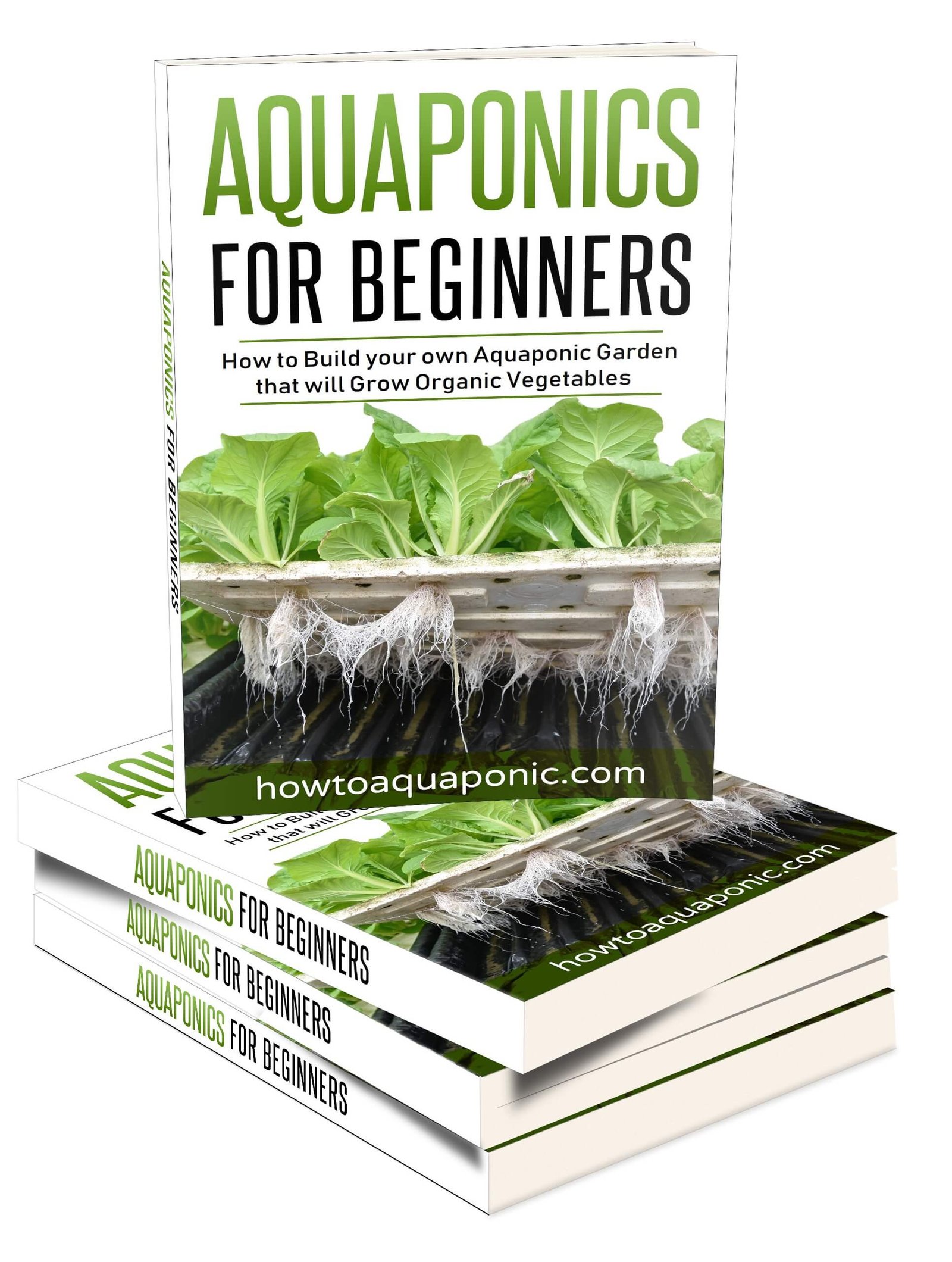Air or dissolved oxygen in an aquaponics system is often underrated.
In this article, I’m going to share my preferred air pump to increase dissolved oxygen in an aquaponics system.
But first, let’s discover why you would need dissolved oxygen…
Why do you need an air pump in aquaponics?
An air pump in aquaponics is used to supply oxygen to your fish and plant roots. Failing in supplying enough air for your aquaponics system will result in the following problems:
- Oxygen deprivation for the fish
- Root rot in your plants
- Dying of nitrifying bacteria
These are the organisms that consume oxygen in an aquaponics system:
- Fish
- Plants
- Bacteria
- Algae
An air pump combined with air stones also serves as emergency aeration if your pump fails. It’s a cheap way of keeping your fish alive and gives you peace of mind.
Many pathogens thrive in low air conditions. To minimize this you should increase the dissolved oxygen level of your aquaponics system.
Dissolved oxygen levels in water lowers when the temperature of the water increases. That’s why the highest chance for fish deaths is in summer.
Fish need to extract oxygen from the water, the higher the dissolved oxygen in the water, the less energy the fish needs to extract it.
Fish like tilapia and catfish need at least 2 to 3mg/L while trout needs up to 8mg/L. Going slightly above these variables does no harm to the fish or your system. In fact, I encourage you to have more dissolved oxygen in your system.
You need to minimize algae growth because they consume oxygen.
Aeration also provides degassing of the toxic gasses that are related to denitrification. Denitrification is an advanced technique I cover in my book.
 I have written a book that contains all the information you need to get started with aquaponics.
I have written a book that contains all the information you need to get started with aquaponics.
Don’t be the person that makes painful mistakes during your first aquaponics build!
It has 265 pages filled with information about aquaponics. It’s available in paperback or eBook format.
You can buy it here on Amazon.com
How does Aeration in Aquaponics Works?
The aeration of an aquaponic system can be done in two ways:
- Using water flow to disturb the water surface
- Using aerators to disturb the water surface
Creating a high dissolved oxygen level is done by creating movement in the water and breaking the surface tension of the fish tank. This is done by a moving flow of water or aeration by airstones.
Where do you place air stones?
In growbeds
In growbeds, the flood and drain cycle will supply oxygen to the roots and to the bacteria. There is no air supply needed in the growbed. Your fish need dissolved oxygen so it’s best to place air stones in the fish tank.
In DWC
A DWC system needs more oxygen than a growbed system. This is because the roots are permanently submerged in the water. If you are using a bio filter you should install a few air stones in it as well. You also need to install one or more air stones in the fish tank. You can see that a DWC need more air supply than a typical growbed.
In NFT
An NFT systems doesn’t need as much air input than a DWC system does. In NFT systems, the air is supplied in the fish tank and biofilter.
In DFT
A Deep Flow Technique system needs additional air stones in the channels or right before the channels. Instead of a film in the gutters, DFT uses an inch or more of water in the channels.
Mineralization tank
If you have a mineralization tank you need to add some airstones to them. This is to provide oxygen to the bacteria that break down the solids and also to circulate the solids in the tank. I recommend installing a mineralization tank if you are not using growbeds.
Diffusion of air in the water
Dissolved oxygen is transferred to the water column through diffusion. The air is diffused in the water. This is done by air stones. The smaller the air bubbles the better. But smaller bubbles require more pressure from the pump. The size of the bubbles also depends on how big the pores are in the air stone.
The deeper you put the air stones in the water, the harder the air pump needs to pump because it has to fight the pressure. So, you are thinking about putting them right under the surface? That’s wouldn’t be such a good idea because the diffusion of the air also depends on the time it is in contact with the water. The depth plays a role in disturbing the surface. The deeper the diffuser is, the more water is moved.
Selecting an Aquaponics Air Pump
You can’t oversize your air pump in aquaponics. I haven’t seen any scientifically proven method of calculating the size of an air pump in aquaponics because there are so many variables.
I have seen a formula where they calculate the required oxygen for aquaculture. The calculation can be found here: http://www.fao.org/3/x5744e/x5744e0m.htm#5.1%20bubble%20aeration
Selecting air stones for the air pump
When you have selected the air pump it’s time to select the air stones. Knowing from the pump you have chosen you will have a flow rating in Litres per hour. In this example, it’s a 60 liter/minute pump. It has a manifold with valves so we can control which one we use. You can have 5 air stones which will have a flow of 12 liters/min each.
We need to choose an air stone that’s designed for of flow of 10 liters per minute.
Recommended air pump setup for aquaponics
Growbed setup – total setup cost = $39
Hydrofarm Active Aqua 6W 15L/min
Pawfly airstones 2L/min
25ft air tubing
Small DWC setup – total setup cost = $88
Vivosun 32W 60L/min
5x 4-inch airstones
25ft air tubing
Tips
Have your airlines the same length and your air stones at the same depth. Air takes the path of least resistance. If you want to have an equal amount of air distribution in east air stone you should take this into account.
Mount the air pump above the waterline if you don’t install one-way valves. When the power shuts off the water can come up in the tubes and end up in the water pump. That’s why installing it above the water line is a good idea.
Frequently occurring problems
The airpump is overheating
The overheating of an airpump mostly happens because the pump can’t get rid of all the airflow it’s producing. Thus, creating resistance in the airpump. It’s better to have another air stone attached to one of the outlets to release the pressure build-up.
You can also use a bleed valve which ‘bleeds’ unused air back into the atmosphere. But that would be a waste. It’s better to add another air stone in the system.
What does it cost to run an air pump?
I’m going to calculate the cost of running the air pump I recommend.
- The power consumption is 32Watts
- We run the pump 24/7
- Electricity price is $0.12/kWh
32 watts x 24 hours = 768 Wh/day
768/1000 = 0.768 kWh/day
0.768 x $0.12 = $0.09216/day
$0.09216 x 365 days = $33.6/year
How to dampen the sound of an air pump?
The pump comes with rubber feet which will dampen the noise of the pump. You can also install a diffuser or dampener on the inlet of the compressor.
My airstones are getting clogged up
After a while, the air stone can become clogged with algae or solid waste. It’s good to clean the air stone once in a while to increase the diffusion of the bubbles. The best method to clean an air stone is to use a toothbrush to clean it.
An alternative to an airstone is a venturi. I’ve written a post about how to make your own venturi. Click here to read it.
 I have written a book that contains all the information you need to get started with aquaponics.
I have written a book that contains all the information you need to get started with aquaponics.
Don’t be the person that makes painful mistakes during your first aquaponics build!
It has 265 pages filled with information about aquaponics. It’s available in paperback or eBook format.
You can buy it here on Amazon.com

Nick loves building, managing and giving others advice on aquaponics. He created this website to do just that. He is the author of Aquaponics for beginners. If you got a question contact him here or read more on the about page here.
